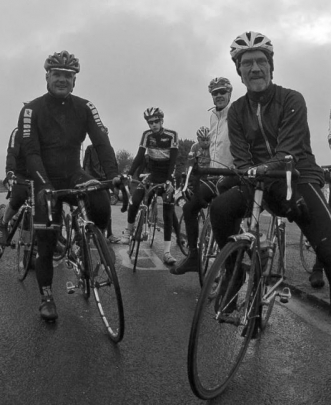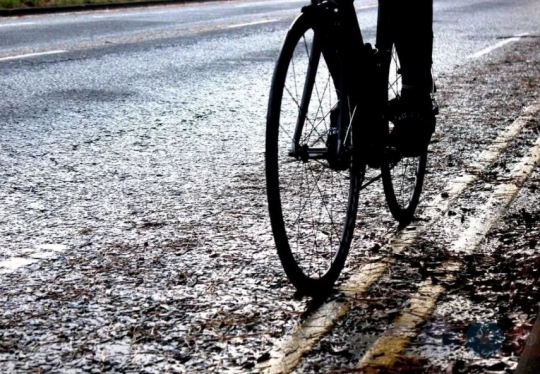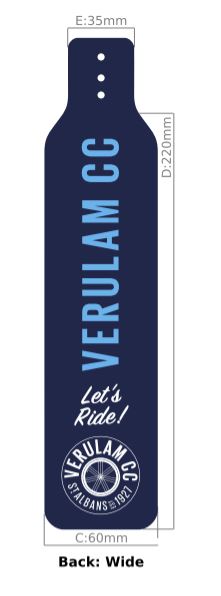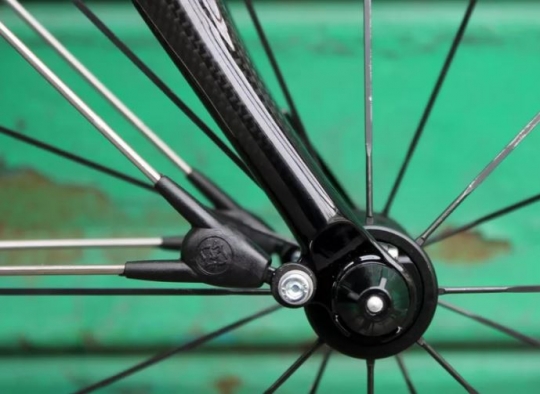Mudguards & Mud-Flaps
The only question is not do I need mudguards, rather when do I need to fit them?

If you plan on riding regularly through the year in Hertfordshire, then you need to accept that you’re likely to get wet. In fact, you will get wet! Even the best laid plans – checking the weather forecast closely to time your ride to ‘avoid’ rain – can quickly be washed down the road with an unexpected downpour.
When the weather requires it, mudguards are mandatory for VCC Club runs. The minimum requirement is for a rear mudguard where the tail extends below the level of the axle.

It’s not about you, although fair to say mudguards are a good way to stay dry(er) and so warm(er), it’s a simple matter of courtesy to your fellow riders.
Our roads are not exactly clean! Tractors and farm animals, horses and other road users mean that for health and safety reasons, mudguards (and rear mudguards ideally should be fitted with an additional mud-flap) must be fitted when the conditions require them.
VCC rear mud-flap - available now!
Available from Andy Rice, Club Secretary, who is offering free fitting in Sandridge (thanks Andy)! Just £7.99. To get yours email
When is that?
Always in wet conditions; when there is rain, rain is forecast or there has been rain in the previous 24 hours and when conditions have been and continue to be cold and damp, as the roads will be wet.
If you arrive to join a club run with no, or inadequate mudguards, you will not be welcomed by your chosen group and the leader will send you away! Please don’t place your Run Leader in the unenviable position of having to send you packing…

Why? Most road riders fit mudguards to their bike when the weather requires it, and for good reason. Rain and low temperatures are a bad combination and once you’re wet it can be difficult to stay warm. A previously enjoyable ride can quickly become a damp squib. Mudguards will go a long way to helping you and your fellow riders stay (relatively) warm and (reasonably) dry on your ride.
Five steadfast reasons to fit Mudguards
If you still need convincing, here are five steadfast reasons why you should fit mudguards to your bike.
1) You’ll stay dryer
First things first, this may be stating the obvious but only once you’ve ridden with mudguards do you realise just how much water and spray is kicked up from the road, and its contribution to how wet you are on the bike.
Riding in weather like this is hard enough. Not having mudguards makes it even tougher.
In fact, unless it’s really raining cats and dogs, you’re likely to get wetter from road spray than the actual wet stuff that is falling from the sky. No-one likes the feeling of soaking wet feet from water cascading off the front wheel or a soggy chamois from the spray kicked up from the back tyre.
And if you’re worried about mudguards ruining the clean lines of your bike, then consider the streak of brown sludge running up the back of your bib tights and jersey if you don’t have them.
What’s more, the colder temperatures of winter also mean that roads stay wet long after rain has stopped falling, so even if it’s chucked it down overnight and the sky is now blue, you’ll feel the benefit of mudguards right through until you arrive home again.
2) Your club mates will be grateful
Mudguards aren’t only for your benefit, but your club-mates too.
If you ride on your own and are happy to forgo mudguards then that’s all very well, but if no-one likes a soggy chamois then even fewer like being hit in the face by a jet of cold, dirty water when following a wheel.
If you ride in a group then your fellow riders will be grateful if you have mudguards.
It’s a sure-fire way to lose friends in the bunch, especially if you’re the only one on the club run who hasn’t got mudguards.
However, mudguards offer varying levels of protection for the following rider and the most effective way to contribute to the comfort of others is to have a full-length mudguards with a rear mud flap. A front mud flap will also provide additional protection for your feet.
But it’s not just you and your club mates who will feel the benefit…
3) Your bike will be grateful, too
Winter is a tough time for both you and your bike and if you place importance on a clean machine it will sometimes feel like you’re spending as many hours cleaning your bike as actually riding it.
However, mudguards will also make a contribution to keeping your bike clean, as well as you. It doesn’t take much for your bike to become filthy in winter.
All that water kicked up by the road has to go somewhere and if you don’t have mudguards then invariably it makes a beeline for your drivetrain, resulting in a thick, stubborn sludge and corrosive road salt caked all over the chain, cassette, chainrings, derailleurs and brake callipers.
Of course, mudguards can only offer so much protection and your bike will still need plenty of attention through the winter months, but the investment you make in a set of mudguards is worthwhile.
4) You’ll ride more
Staying warm and dry – and having the bike and clothing to help you do so – is a sure-fire way to boost you motivation through winter. More motivation = more miles. Winter miles = summer smiles!
That’s something of a sweeping statement, of course, and a hardy cyclist will ride whatever the weather, but if it’s raining when you wake up in the morning and peek through the curtains, then you’re more likely to get out of the door if you’re not faced with the prospect of being soaked from head to toe within minutes.
Even if it’s stopped raining, cold winter temperatures mean the roads stay wet long after the sky has cleared.
For many riders, winter is the time of year to embark on what will likely be the longest uninterrupted period of training of the year, with the months from November to March reserved to rack up steady miles, ahead of next year’s rides and races – so you might as well do it in (a little more) comfort, right?
Mudguards can also help improve your performance on the bike, too. If you’re wet and cold then your body has to spend valuable energy warming you up, thus diverting it away from what matters – pressing on the pedals.
5) You can get them on (almost) any bike
Gone are the days when mudguards could only be mounted to bikes with the clearance and fittings for traditional mudguards.
Full-length mudguards still offer the best protection and, if you plan on logging serious miles over winter and have the budget, then a dedicated winter bike with proper mudguards, wide tyres (25c, 28c or above), and affordable but hardwearing components, is a sound investment, particularly as it can double as a four-seasons commuter or light tourer.
While your frame and fork will need eyelets like this for proper mudguards, clip-on mudguards can be fitted to most road bikes.
However, if you ride your ‘race’ bike (that is to say a machine which doesn’t have the clearance or eyelets for full mudguards), then you can still fit clip-on mudguards, and while they may not offer as comprehensive coverage, they’ll still do a good job.
Clip-on mudguards are also lighter than full-length mudguards and can be removed quicker if need be but, on the flip side, they can be fiddly and take some perseverance to fit, and, while most will be ok, not all clip-on mudguards will fit all bikes, so check if you can or go ask at your local bike shop (check out the Member offers).
So, are you convinced? If not, please do not join a VCC Club run when the weather requires them! Yes, there is a bit of time and expense involved in adding mudguards to your bike, but we’re sure you’ll be glad you did.
[With thanks to George Scott and www.roadcyclinguk.com]




